Autonauts vs Piratebots Review
Production simulator with a unique aesthetic
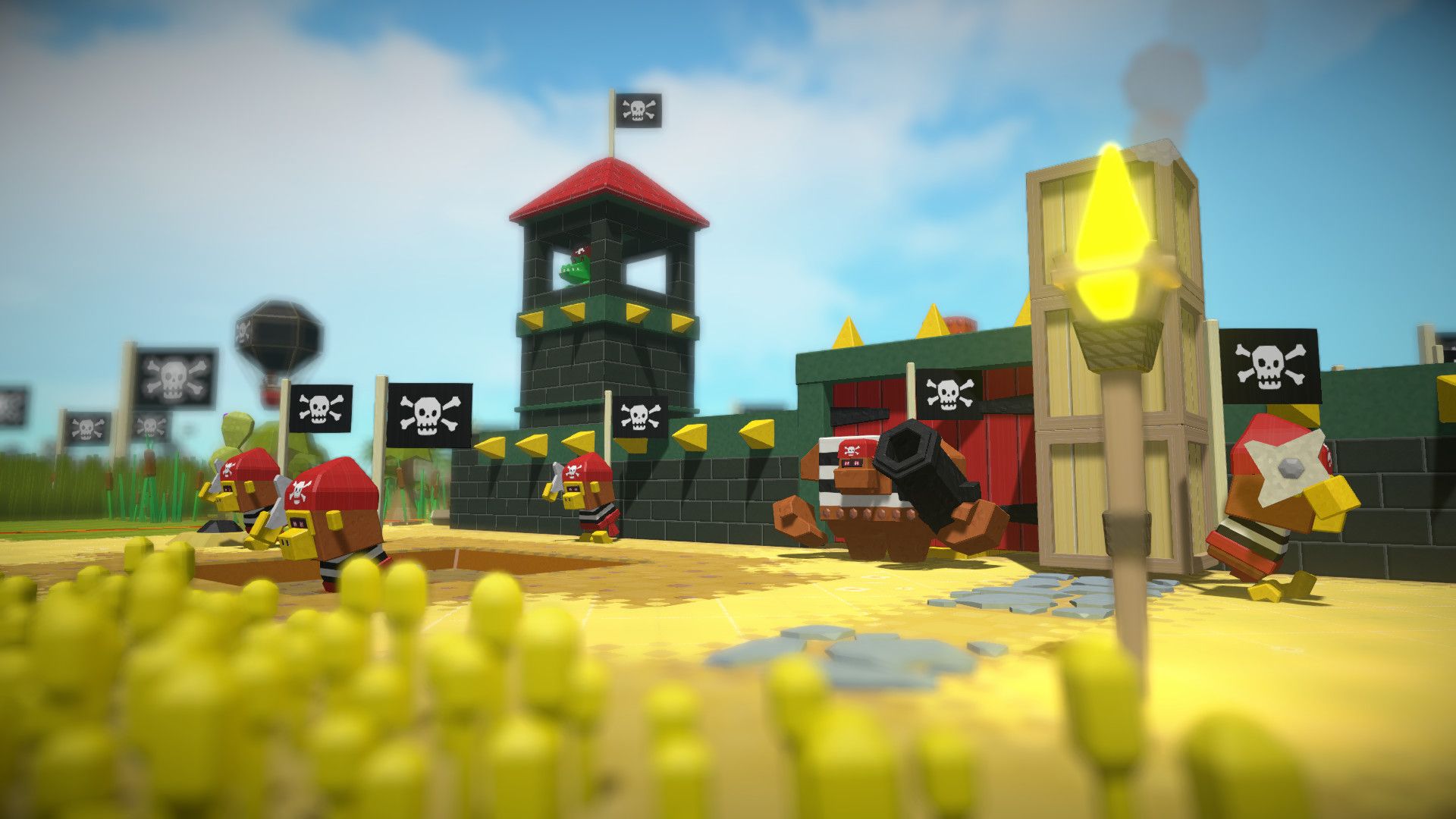
Autonauts vs Piratebots is developer Denki’s recent follow-up to their 2019 production sim Autonauts. In this game, you play as a captain of the Autonauts Defense Force that has been dispatched after a colony of Autonauts has been attacked by Piratebots. That’s the pretense for the game's new flagship mechanic where all production eventually helps in an effort to defend against, and uproot the Piratebots presence.
You will need to complete set objectives to advance your territorial crawl across the randomly generated island. You do this by completing production cycles of major resources and by leading troops of your own soldiers to combat the Piratebots at their outposts littered generously around the island. Your main way to generate resources is to create production lines using robots that you can program by having them copy what you do. The game follows this pattern, having you constantly adjust and redesign your operations as the Piratebot threat grows and you unlock better tools and equipment.
Before jumping into critique I want to preface with a disclaimer that this game hits close to home for me because of my day job. I’m going to point out a lot of things that I wish would be better, but it’ll mostly be to Autonauts credit that it can simulate the manufacturing environment so accurately that I find myself creating correctional opportunities every hour I play the game.
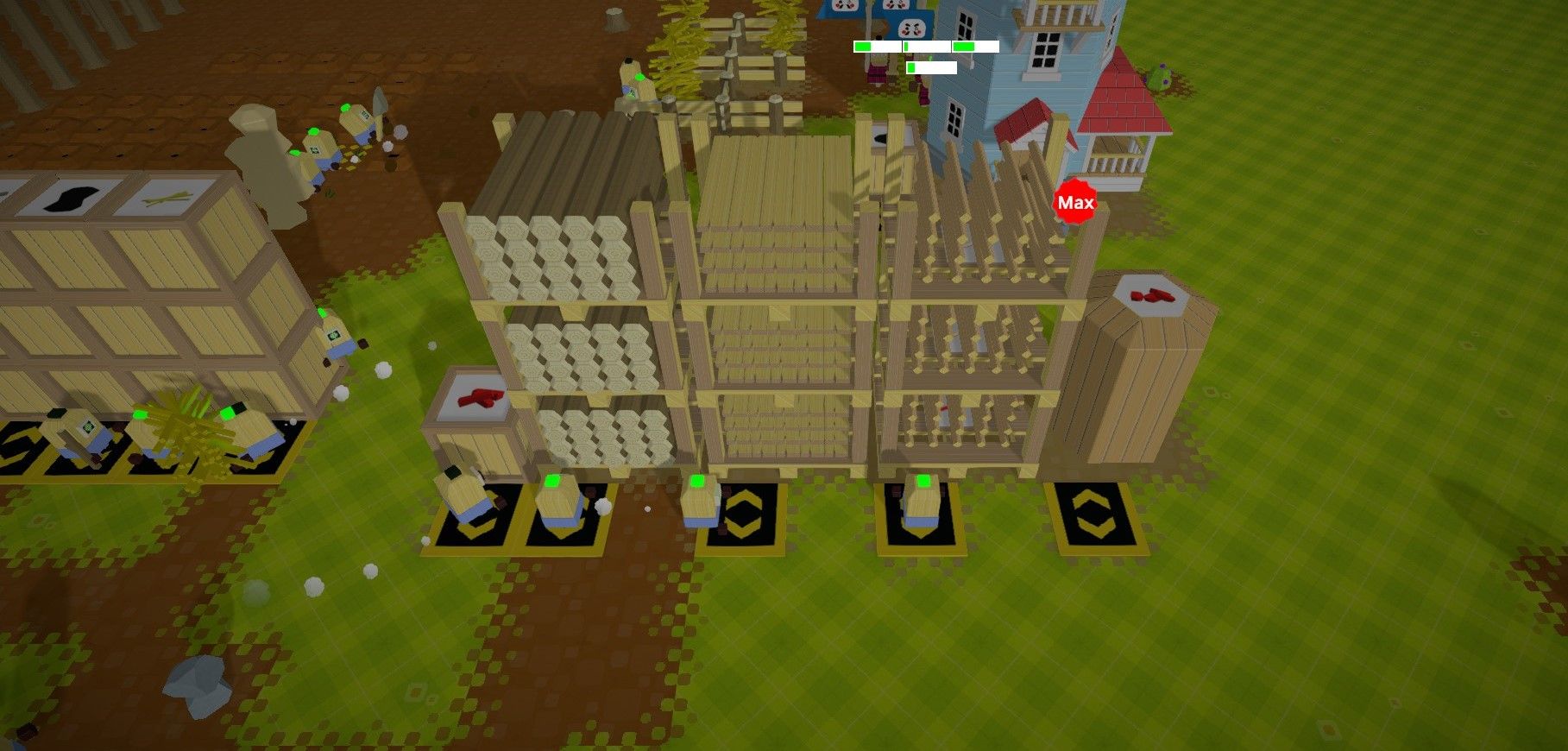
I think my biggest worry jumping into a game like this was wondering how easy it was going to be to learn all of the systems. I am happy to report that Autonauts vs Piratebots features a robust tutorial system that does an exceptional job of walking you through all of the basics. In my opinion, there is a missed opportunity here to give a crash course on how to read and write basic scratch.
On the other hand, I think most people that will be into a game like this will fall into one of two camps; one camp that has had the minimum exposure to coding to know exactly what they're looking at, and the other camp that can pick it up as they go along. And while I think that the tutorial is one of the best in the realm of production simulation, I wish that it gave you a little more space to experiment and build your production line your own way. In my first playthrough, I ended up learning all that I could from the tutorials and then starting a new island in which I could start from scratch, building my fortune in my own way.
I am a really big fan of the game's visuals, as the cute chibi robot style and simple animations give it a toy box feel that leans itself to the playful identity of drag and drop buildings and robots made of wood and acorns. The whole presentation is very whimsical, which won’t be a shock to those familiar with the first game as it appears largely similar.
Most objects, buildings, and surfaces are easily recognizable and make management simple and clean. This may be a welcome sight for fans of this genre who have been staring at a brown/gray Factorio screen for the past few years. I do wish that there was a way to color code the robots in the active view so that you can spot line freezes or broken sequences in worker code. There is currently a way to create a “team” and assign robots to a team that highlights them in a specific color when you press the Spacebar. This is really nice, though I think it would have been nice to also see those color assignments while all of your robots are in action.
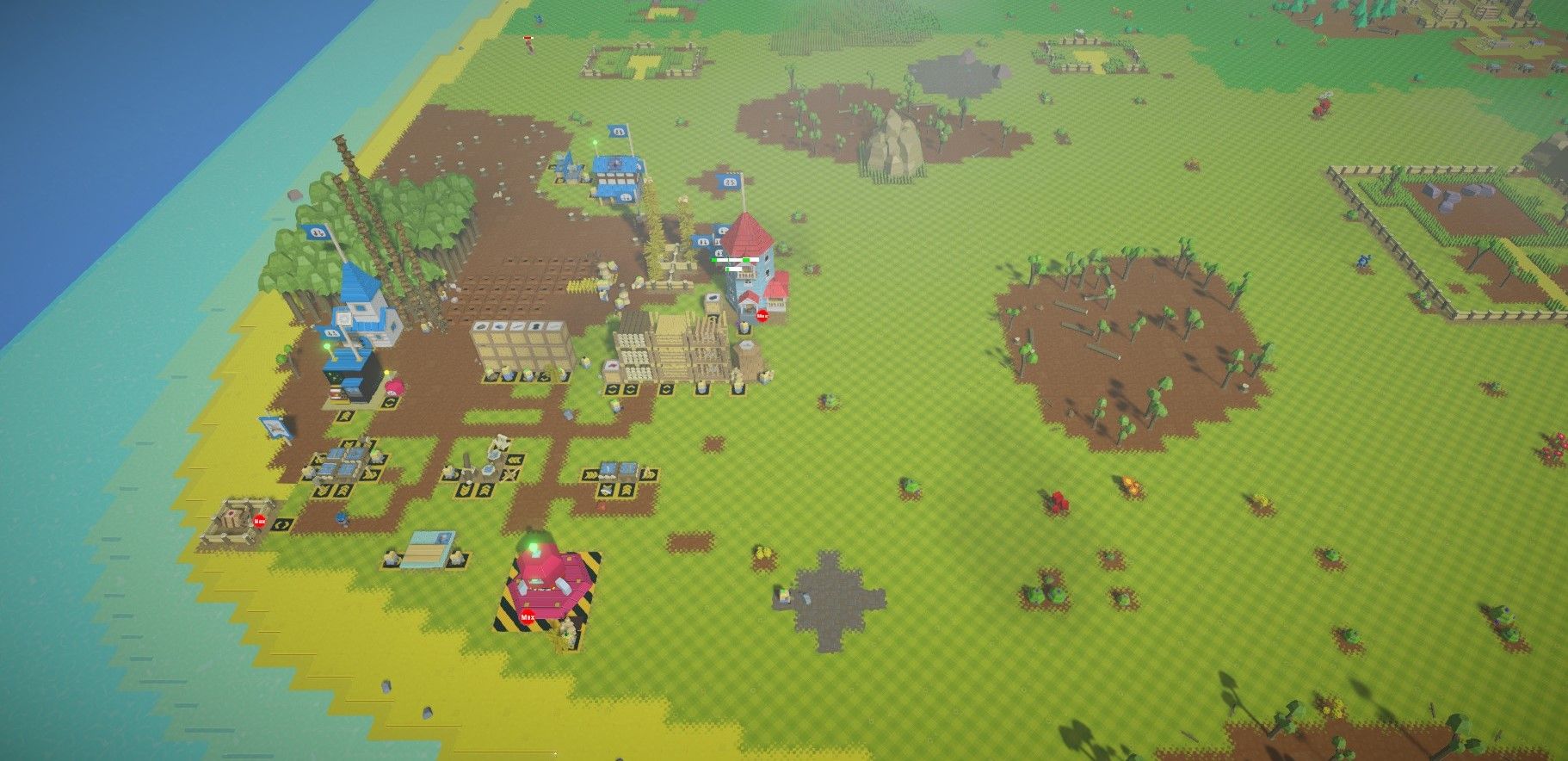
The actual process of creating your robot workforce is my favorite part of the experience. Setting up shop and training these robots to follow menial tasks is so rewarding. You watch your collectors make your stock resources rise, your artisan minions craft backup tools for the laborers, and your field staff bustle from plant to plant. I was initially really annoyed by this part of the game as it is very poorly balanced. What this means is that you are often left in situations where you are either out of a primary resource, or your robots are left standing with very little to do. I thought it was a glaring fault that one robot for each job couldn’t create the perfect flow, and there is a lot more to that like travel time and resource availability. And then on my third playthrough, I realized that this was the constant state of the game that keeps the player on their toes, always having to add or subtract workers to create maximum efficiency.
Let's take this example scenario where you are out of logs. Then your mind runs, what went wrong? None of the robots have broken sequence, the field is empty, ok, the digger is working full bore, the planter is stopped, why? The code is good and running, ok there are no seeds to plant trees, why? Oh, not enough seed collectors because they are running double duty also picking up sticks, a simple fix caused by a simple mistake.
You constantly run into these types of problems when you start to leave the safety net of the tutorial and it feels so good to troubleshoot solutions in the production environment that you created. Unfortunately, this part of the game falls apart when you start unlocking new machines. By the end of the first biome, you'll likely be the proud owner of an entirely full warehouse with everything you could ever need.
The game then provides you with ways to get money and troops faster and faster, except you are already producing faster than you can keep up with and your bank account is so full you have to start burying cash in the backyard. Autonauts vs Piratebots starts slow, really slow. You will have plenty of time to perfect the capitalist machine before the enemy will even start to look at you.
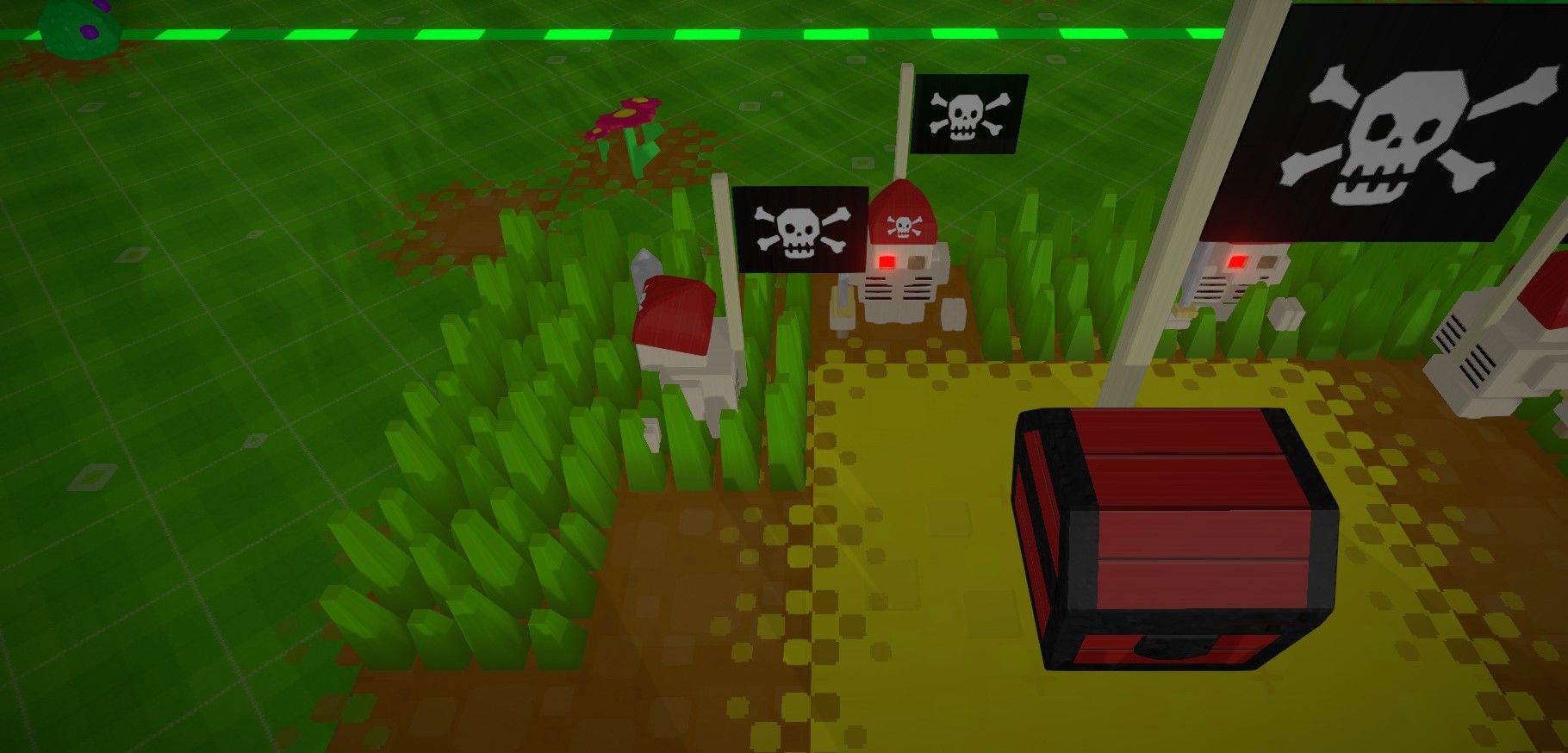
This has little to do with the actual difficulty of the game rather than the pacing. You gain money and resources at breakneck speeds while the limits on how many troops you can make at any time as well as the amount of money you can place in the bank remain low. Note that reprogramming the bots and changing tables would take a few hours to accomplish, and it is something that you don’t even really need. I appreciate the progression that they have implemented into the game but if they want to make me a millionaire, then put something in the game that costs millions.
The combat of Autonauts vs Piratebots gets about as complicated as a heated game of Clash of Clans. You create your bots and put them into squads, give those squads certain targets to focus on in your code (usually either troops or buildings), then you drop your flag and let the little guys go crazy. I’m not opposed to this kind of automated combat, as it fits the style of the game. You are playing as a manager, not a squad leader, not a soldier. You are here to make troops and build the teams.
Once you realize this is not Command and Conquer, it's actually really enjoyable to send bots to their deaths knowing that your focus is rightly on the production of as many expendable minions as possible. I also believe that this game is marketed more as a tower defense style base builder, and it succeeds at this to a much higher degree. The Piratebots will focus their attacks on a few of your major resources which can allow you to focus your defensive structures on specific buildings that you know they will attack. It gives you clear goals without obstructing the freedoms of your workers, which is really nice for a game that could quickly get annoying if you constantly had to worry about your workers getting axed on their way to work.
I did end up running into some frustrating moments as the tutorial for the combat is much less refined than the tutorial for production. For example, it took me an embarrassingly long time to figure out how to program bots to attack enemy buildings because it didn’t show up in any tutorial before the cooking station raid.
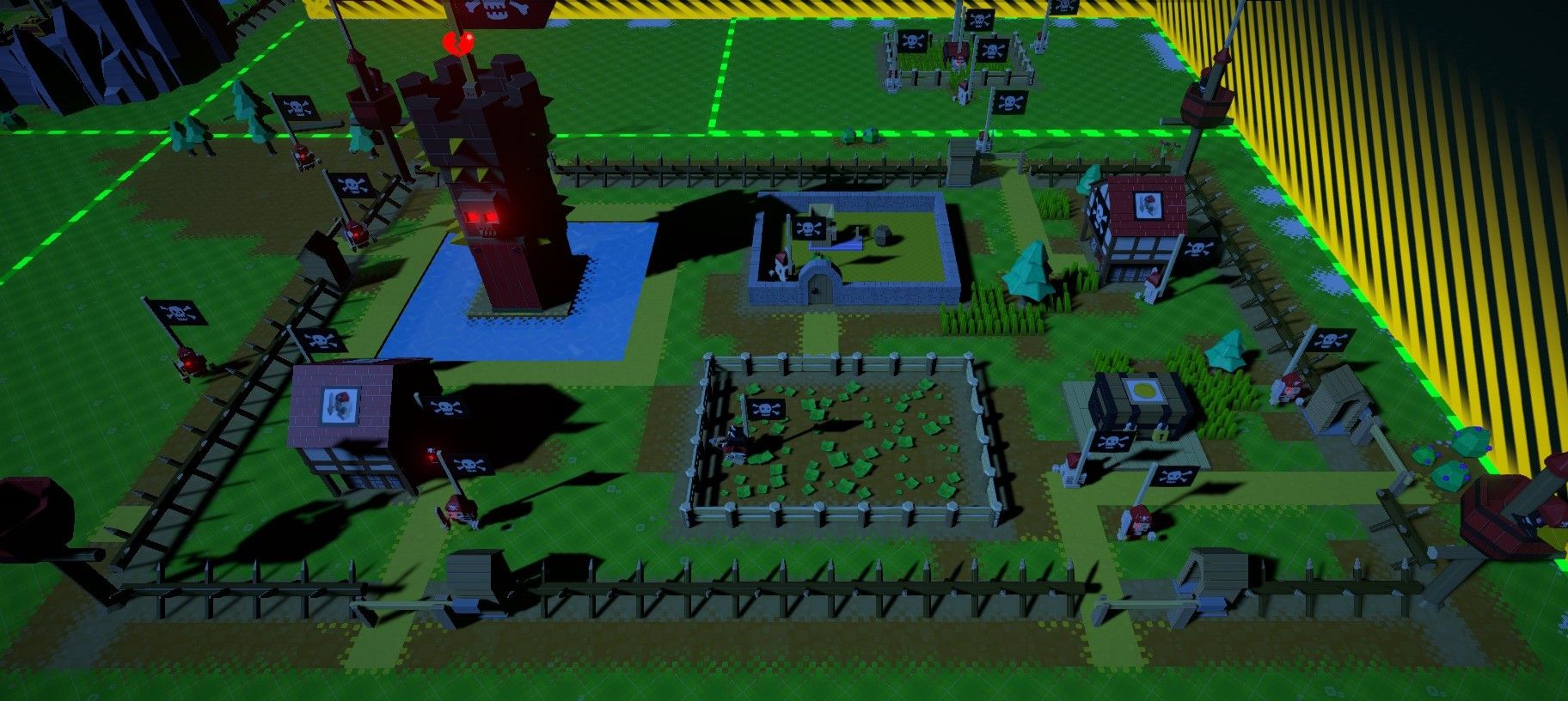
I stopped my main play through approximately halfway through the sandbox as I wanted to get my impressions down at a fresher time. The game was getting into the same loops of unlocking faster production, bigger defenses, and sending more bots to their demise. It follows this loop for a while, giving you some different enemy camps to consider as you make your way through the 5 biomes on the island.
I really enjoyed my time with Autonauts vs Piratebots. I think that the deeply satisfying learning curve and setup phase should have been paced more appropriately with the repetitive mid-late game, but the new production and defense implementations will keep the avid base builder really happy through to the end of the game. Even writing this review I am thinking of better ways to design and set up cleaner-looking and more efficient outposts, and I believe that’s the charm of this title. The active thinker is going to get a lot out of this game in the form of always thinking about how to be better even when the game doesn’t demand it of them.
I would definitely recommend this game to anyone that just read my review and said “I think this guy just needed to approach it like so and he would've had fewer criticisms…” because that is absolutely who this game is designed for.
Autonauts vs Piratebots is currently listed on Steam and the Nintendo Switch Store at an MSRP of $19.99 USD.
